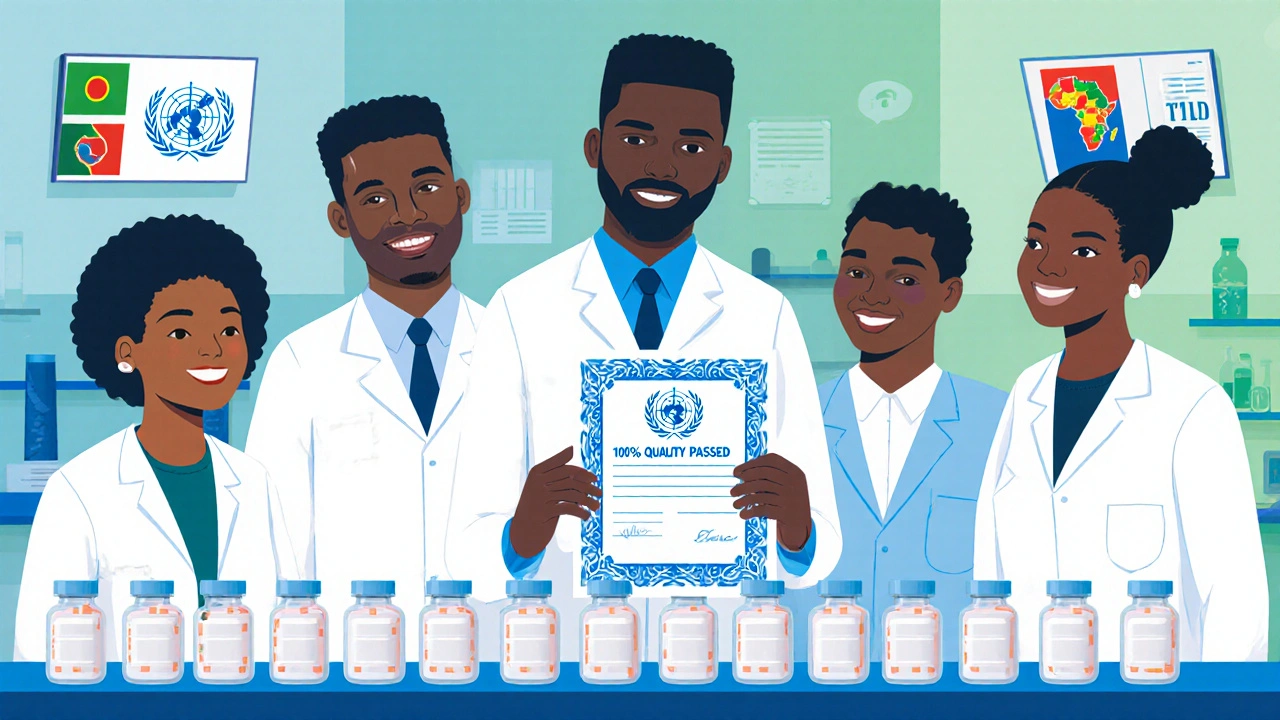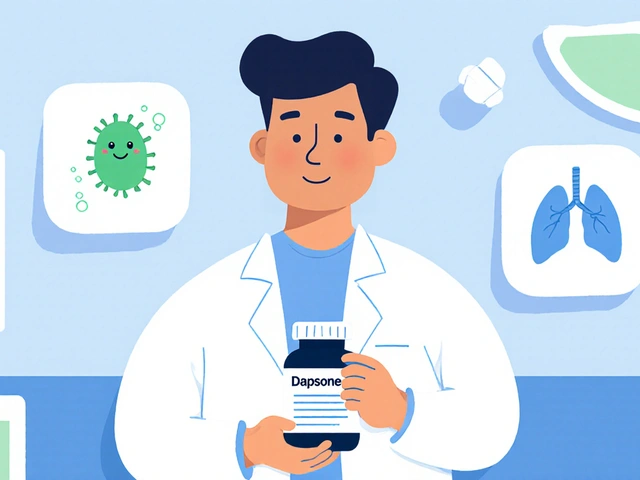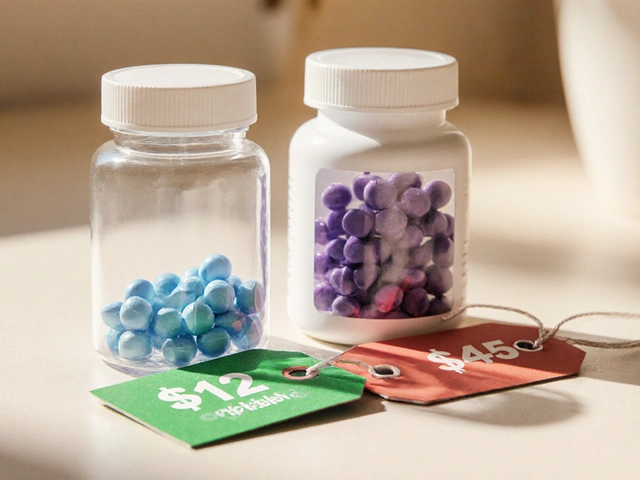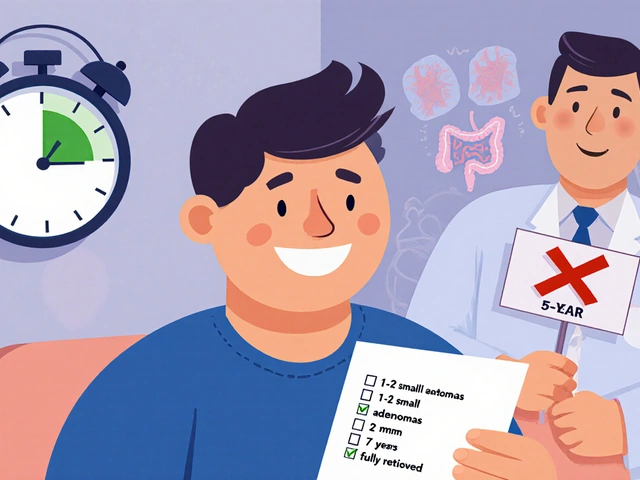For decades, Africa relied on medicine shipped from overseas to keep people alive with HIV. In 2000, a year of treatment cost over $10,000. By 2015, Indian generics brought that down to under $100. But even then, 80% of Africa’s medicines still came from outside the continent. Supply chains broke during pandemics. Delays happened. Stockouts killed. Then, on May 6, 2025, everything changed.
African-Made HIV Medicine Hits the Market
The Global Fund bought its first ever African-made first-line HIV treatment. Not from India. Not from Europe. From Kenya. The drug? TLD - a single pill combining tenofovir, lamivudine, and dolutegravir. Made by Universal Corporation Ltd, a company based in Nairobi. It had passed WHO prequalification - the gold standard for quality, safety, and effectiveness. And it was shipped to Mozambique, enough to treat over 72,000 people every year.
This wasn’t just a shipment. It was a turning point. For the first time, a major global health buyer chose African-made medicine over imported alternatives. And it wasn’t a one-off. This was the start of a new system - one built on local capacity, not foreign dependence.
Why Local Production Matters
Sub-Saharan Africa has 65% of the world’s HIV cases. But it produces less than 3% of its own medicines. That imbalance isn’t just unfair - it’s dangerous. When global supply chains snap - like during COVID-19 - African clinics run out. Patients miss doses. Drug resistance grows. Deaths rise.
Local production fixes that. When medicine is made in Africa, it gets to clinics faster. It’s cheaper to transport. It’s easier to adjust based on local needs - like combining drugs that work better for African populations or avoiding ingredients that cause side effects in certain groups. And it creates jobs. Trained technicians. Quality control staff. Logistics experts. All within the continent.
Dr. Ussene Hilário Isse, Mozambique’s Minister of Health, put it plainly: “Africa’s growing capacity to locally produce lifesaving medications marks a strategic shift for our continent.”
The TLD Breakthrough
TLD is the current global standard for first-line HIV treatment. It’s more effective than older regimens. It has a higher barrier to resistance. Fewer side effects. And it’s taken as one pill, once a day - easier for patients to stick with.
Before 2023, no African company had ever made TLD that met WHO standards. Universal Corporation Ltd changed that. Their factory in Kenya passed strict inspections. Every batch was tested. Every process documented. It wasn’t just about making pills. It was about proving African manufacturers could meet the same standards as the best in the world.
That’s why WHO prequalification matters. It’s not a formality. It’s a gate. Without it, the Global Fund, UNICEF, and other major buyers can’t purchase the medicine. Universal’s approval opened the door for others.

More Than Just Pills
Building local HIV treatment capacity isn’t just about pills. It’s about the whole system. That’s why Codix Bio in Nigeria started making rapid HIV diagnostic tests - using technology transferred from global partner SD Biosensor and supported by WHO’s Health Technology Access Programme.
Testing and treatment go hand in hand. You can’t treat what you don’t know. Before, many people didn’t know their status. Now, with locally made tests, clinics in rural areas can get results in minutes - no lab needed. That’s how you close the gap in the HIV care cascade.
In 2023, Eastern and Southern Africa reached 93% of people knowing their status, 83% on treatment, and 78% with suppressed virus. Western and Central Africa lagged - 81%, 76%, 70%. But with better diagnostics and local drugs, those numbers are climbing.
Long-Acting Injections Are Coming
By October 2025, South Africa became the first African country to register a twice-yearly HIV injection: cabotegravir long-acting (CAB LA). No daily pills. Just two shots a year. For people who struggle with adherence, this is life-changing.
And here’s the next big step: six African companies got licenses from Gilead to make generic versions. Experts predict prices could drop 80-90% below the brand. That means even the poorest clinics could afford it. Gilead also signed agreements to supply lenacapavir - a new long-acting PrEP drug - at no profit to 133 countries, including all of Sub-Saharan Africa, until generics arrive. The first shipments to low-income countries are expected before the end of 2025.

Who’s Funding This Change?
This isn’t happening by accident. It’s the result of coordinated funding and policy.
- The Global Fund is buying African-made ARVs at scale, creating guaranteed demand.
- Unitaid and the Gates Foundation are funding new manufacturing plants across Africa.
- CIFF (the Children’s Investment Fund Foundation) is helping with market shaping - making sure prices stay low and supply stays steady.
- WHO is helping countries harmonize regulations so one approval can be used across borders.
- PEPFAR (U.S. President’s Emergency Plan for AIDS Relief) is supporting regulatory approvals and training.
Together, they’re creating a market where African manufacturers can compete - not just survive.
The Road Ahead: Challenges Still Exist
Progress is real. But Africa still needs about 15 million person-years of first-line ARVs every year. Right now, African manufacturers can only cover a fraction of that.
More factories are coming. By Q4 2025, new production lines in Nigeria, Ethiopia, Rwanda, and Ghana are expected to start. But building a factory isn’t enough. You need skilled workers. Reliable power. Stable supply chains for raw materials. Strong regulatory systems. And political will.
The African Union’s Pharmaceutical Manufacturing Plan for Africa (PMPA) aims to get local production from 3% to 40% by 2040. That’s ambitious. But it’s possible - if funding continues and governments prioritize it.
Another hurdle? Integration. HIV programs have long operated in silos - separate from maternal health, tuberculosis care, or mental health services. The next step is to weave HIV treatment into the broader health system. That’s more efficient. More sustainable. And it saves lives beyond just HIV.
What This Means for the Future
By 2030, African-made antiretrovirals could supply 20-30% of the continent’s needs. That’s not 100%. But it’s a massive shift from where we started.
This isn’t just about HIV. It’s about health sovereignty. When a country can make its own medicine, it controls its own health destiny. It doesn’t wait for others to decide when to send help. It doesn’t suffer when global prices spike.
And it’s not just drugs. The same model is now being applied to vaccines, cancer meds, and maternal health products. The lessons from HIV are being used to build a new African pharmaceutical industry - one that’s not just a consumer, but a creator.
For the first time, African scientists, engineers, and entrepreneurs aren’t just receiving aid. They’re leading innovation. They’re setting standards. And they’re proving that the continent doesn’t need to wait for someone else to solve its problems - it can solve them itself.
Are African-made antiretrovirals as effective as imported ones?
Yes. All African-made antiretrovirals must pass WHO prequalification, which requires them to meet the same strict quality, safety, and effectiveness standards as drugs made in Europe, the U.S., or India. The TLD pill made in Kenya is chemically identical to the imported version. Clinical trials and real-world data show the same outcomes: high viral suppression rates, low side effects, and strong resistance profiles.
Why did it take so long for Africa to make its own HIV drugs?
For years, the global market relied on low-cost Indian generics, and there was little incentive to invest in African manufacturing. Regulatory systems were weak, funding was scarce, and international buyers didn’t demand local products. Plus, many African countries lacked the technical expertise and infrastructure. But with targeted funding, technical support from WHO and the Global Fund, and the removal of patent barriers through voluntary licenses, African companies finally had the tools to compete.
Can African manufacturers compete with India on price?
They’re getting close. Indian generics brought prices down from $10,000 to under $100 per patient per year. African manufacturers are now producing TLD for around $35-$45 per patient per year - still competitive, and falling as scale increases. The real advantage isn’t just price - it’s speed, reliability, and reduced risk of supply chain disruption. When a shipment from India is delayed, African clinics can still get medicine within days.
What’s next after TLD and long-acting injections?
The next wave includes generic versions of newer drugs like lenacapavir for PrEP and treatments for drug-resistant HIV. African manufacturers are also preparing to produce combination therapies that include HIV, TB, and hepatitis C drugs in single pills - reducing pill burden for patients with multiple conditions. Regulatory harmonization across African countries will allow one approved product to be used across the continent, cutting costs and speeding up access.
How can individuals or organizations support this movement?
Advocacy matters. Push your government and global health agencies to prioritize African-made medicines in procurement policies. Support organizations like the Global Fund, Unitaid, and the Medicines Patent Pool that fund local production. And demand transparency - ask where the medicines in your country’s clinics come from. When buyers choose African-made, manufacturers grow. When manufacturers grow, access improves.






Comments(11)